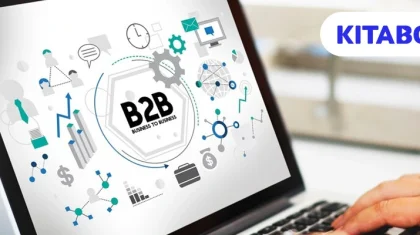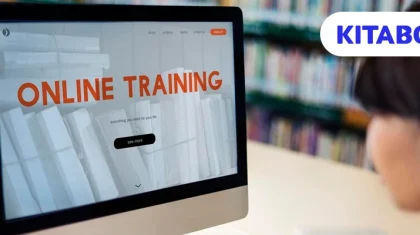
Unlocking Potential: K12 eTextbook Platform Excellence
One aspect of technology that has had a huge influence on K12 learning are digital textbooks. This inclination and steep rise in online learning resources have led to a demand for digital learning platforms.
As the adoption of digital course materials continues to rise, it is transforming the K12 learning landscape in ways that were unimaginable just a few decades ago. Today’s publishers need to be able to adapt to these changes quickly.
In this blog, we’ll explore what to consider while looking for a digital textbook platform for K12 publishers. Let’s dive in!
Table of Contents:
I. The K12 Education Landscape: A Shift Towards Digital
II. Features of a Digital Learning Tool for K12 Publishers
- Engages Students with Interactive Content
- Enhances Content Delivery and Accessibility
- Streamlines Workflows and Collaboration
- Publishes Analytics and Data-Driven Insights
III. Building Success with the Right K12 eTextbook Platform
IV. Wrapping Up
The K12 Education Landscape: A Shift Towards Digital
The educational playground for K12 students is changing at a fast pace as technology becomes more prevalent in classrooms. Alternatives in digital formats have gradually replaced printed textbooks, marking a shift towards a technologically progressive approach to learning.
Digital textbooks are changing the face of K12 education by boosting student engagement, improving accessibility and providing data-based insights for learning. Educational content platforms, like KITABOO, offer innovative features that enable teachers and students to better utilize digital benefits and maximize their educational potential.
The digital textbooks on these platforms provide students with an interactive learning experience while opening up possibilities for publishers to develop adaptive educational content that meets the evolving needs of educators and learners alike.
Features of a Digital Learning Tool for K12 Publishers
A robust digital textbook platform advances K12 publishers to grow and thrive in a versatile setting. This is only possible when an ideal tool is selected. Below are the highlights of such a tool:
Engages Students with Interactive Content
Static textbooks are a thing of the past! In contrast, digital platforms have paved the way for a pedagogical shift in the education landscape. You can easily add multimedia elements like videos, audio clips, and interactive exercises. The result is an increase in attention span due to engaging additions and much-needed stimulation.
The benefits of a K12 science textbook with integrated virtual labs powered by the KITABOO SDK are immense. Wouldn’t you want to try that?
KITABOO will help you with features like multimedia integration, interactive elements, and gamification tools to keep students actively involved.
Enhances Content Delivery and Accessibility
Digital textbooks offer greater flexibility in content delivery. Publishers can ensure that students have access to content on devices, both online and offline for learning.
Additionally, features like text-to-speech and other accessibility tools cater to learning preferences and requirements. Thus, dependable platforms are optimized for diverse learning styles and offer offline functionality for uninterrupted learning, even without internet access.
Streamlines Workflows and Collaboration
A well-designed K12 platform streamlines workflows for publishers. Content creation, editing, and distribution become more efficient, allowing teams to focus on developing high-quality educational materials.
Consider a scenario where you’re collaborating on a K12 history lesson with real-time editing and feedback features. Interactive features shouldn’t end at the individual student level.
For that, consider platforms like KITABOO to enable collaborative learning through note-sharing, discussion forums, and real-time annotations.
Provides Analytics and Data-Driven Insights
Digital platforms provide valuable data on student engagement and content usage. The provision of analytics and data-enriched insights enables publishers to make decisions regarding content development. Hence, you can pinpoint areas for enhancement and tailor the learning experience for students.
Moreover, such a valuable platform offers educators data analytics, on student advancement and engagement. This empowers them to tailor instruction and provide personalized support to each student.
Building Success with the Right K12 eTextbook Platform
Choosing the best digital publishing platform for K12 education is essential for publishers looking to succeed in the current climate. Creating a user-centric platform involves a strategy that emphasizes both, content and features:
- Content Creation and Management Tools: Intuitive tools for educators and authors to easily develop, edit, and collaborate on digital content are crucial.
- Interactive Features and Multimedia Integration: The platform should seamlessly integrate interactive elements like quizzes, annotations, and simulations. Multimedia tools like audio and visuals can lead to rapid learning outcomes and cater to diverse learning styles.
- Secure Delivery and Offline Access: Secure distribution with DRM Digital Rights Management protects intellectual property. Having offline access guarantees learning even when the internet connection is poor, faulty or down.
Real-time Reporting and Feedback: Robust analytical tools offer teachers information on student progress which is driven by the impact of content and opportunities for enhancement. This supports decision-making based on data, for crafting curriculum improvements.
Key Aspects to Search for in a K12 Digital Textbook Platform
KITABOO, an eTextbook platform with AI capabilities offers educational publishers a range of features to maximize their effectiveness in the digital domain. Here are some important features to look out for:
- User-Friendly Interface: The platform should be easy to navigate for both those creating content and the end-users.
- Multilingual Support: Catering to a global audience requires a platform that supports multiple languages.
- Content Security: Robust security features are essential to protect copyrighted content.
- Offline Access: Enabling offline access ensures uninterrupted learning for students.
- Integrations: Seamless integration with Learning Management Systems (LMS) is a valuable asset.
Beyond the Platform
While having a platform is crucial, the quality of content plays a significant role in success as well. Here are some other factors that a digital textbook platform for K12 publishers should have:
- Alignment with Curriculum Standards: Ensure content aligns with relevant curriculum standards to ensure a cohesive learning experience.
- Expertise in Specific Subjects: Collaborate with subject matter experts to create distinctive and upgraded learning materials.
- Continuous Improvement: Regularly update content to reflect changes in curriculum standards and best practices in K12 education.
By merging top-notch digital textbook platforms like KITABOO with high-caliber educational content, K12 publishers can support teachers and students alike.
Wrapping Up
Transitioning to this form of learning opens up a world of opportunities. By employing the tools and strategies, K12 publishers can play a major role in shaping the future of education. What sets KITABOO apart is its ability to adapt and innovate. You can also,
- Design engaging and interactive K12 learning experiences
- Deliver content securely and seamlessly across devices
- Streamline workflows and optimize collaboration
- Gain valuable insights into student engagement and content performance
For details, contact us at contact@kitaboo.com!
Discover how a mobile-first training platform can help your organization.
Kitaboo is a cloud-based platform to create, deliver & track mobile-first interactive training content.



